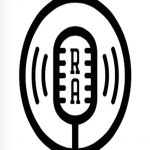bastard] [i’m marilyn manson, don’t /
ask for your favorite rapper]
Below is the second refrain, Refrain 2. These exact lines occur at 1:31, 1:42, and 2:36, and also last 4 bars:
[he dead] /
[amen] /
[he dead] /
[amen] /
When you combine these 2 refrains, the entire 12-bar chorus that happens at 1:26 and 2:42 is this. It’s Refrain 2 + Refrain 1 + Refrain 2.
[he dead] /
[amen] /
[he dead] /
[amen] /
[got me breathing with dragons] [i’ll /
crack the egg in your basket, you /
bastard] [i’m marilyn manson] [don’t /
ask for your favorite rapper] /
[he dead] /
[amen] /
[he dead] /
[amen] /
The astute reader will also have noticed that a Refrain 1, at 1:42, was also left out in the cold. It doesn’t appear to be part of any chorus, or at the least, it appears to be an extra Refrain 1 on the end of a chorus. How is this to be interpreted?
Here, Kendrick once again demonstrates an unfailing lack of the means by which a rapper creates semantic and musical meaning. That’s because when he starts the completely new material of his second verse at 1:47, he continues a rhyme on the final vowel pattern of the last word of Refrain 1. He takes the word “rapper,” from Refrain 1, and rhymes it on “casper,” “nasa,” and so on.
[got me breathing with dragons] [i’ll /
crack the egg in your basket, you /
bastard] [i’m marilyn manson] [don’t /
ask for your favorite rapper] [i /
wrapped him and made him casper] [i /
captured the likes of nasa] / …
Not only are the rhymes from Refrain 1 continued into this new musical section, but they are also the same types of rhymes musically. That’s because they also all happen at the end of bars.
This strong similarity means that instead of interpreting the chorus at 1:26 as the real chorus that lasts 16 bars, and the ending chorus at 2:42 as a shortened chorus of only 12 bars, I interpret the real chorus as lasting 12 bars, and this addition of another Refrain 1 as an elision into the verse. Thus, the Refrain 1 at 1:42 is really part of both the verse and chorus. On the one hand, it’s material from the chorus that we’ve heard before, but on the other, it’s part of the verse because Kendrick goes on to rhyme off its words. Kendrick has blurred the lines between what a chorus is and what a verse is. And without an aid from the production, such as a distinct musical idea that separates the verse from the chorus, we’re left answering that this section is both.
If you liked this article, you might enjoy these other ones, which are among my most popular:
1.) An analysis of Nas’ flow on the 2006 Busta Rhymes song “Don’t Get Carried Away,” which you can read here.
2.) My album review & analysis of the 2012 Kendrick Lamar album “good kid, m.A.A.d city,” which you can read here.
3.) A database of who the 23 most repetitive rappers in the industry are, available here.
4.) A study of every instrument Dr. Dre used on his songs between the years 2000 and 2009, online here.
5.) A breakdown of Eminem’s song “Business,” which you can check out here.


 Join the weekly RapAnalysis newsletter at
Join the weekly RapAnalysis newsletter at